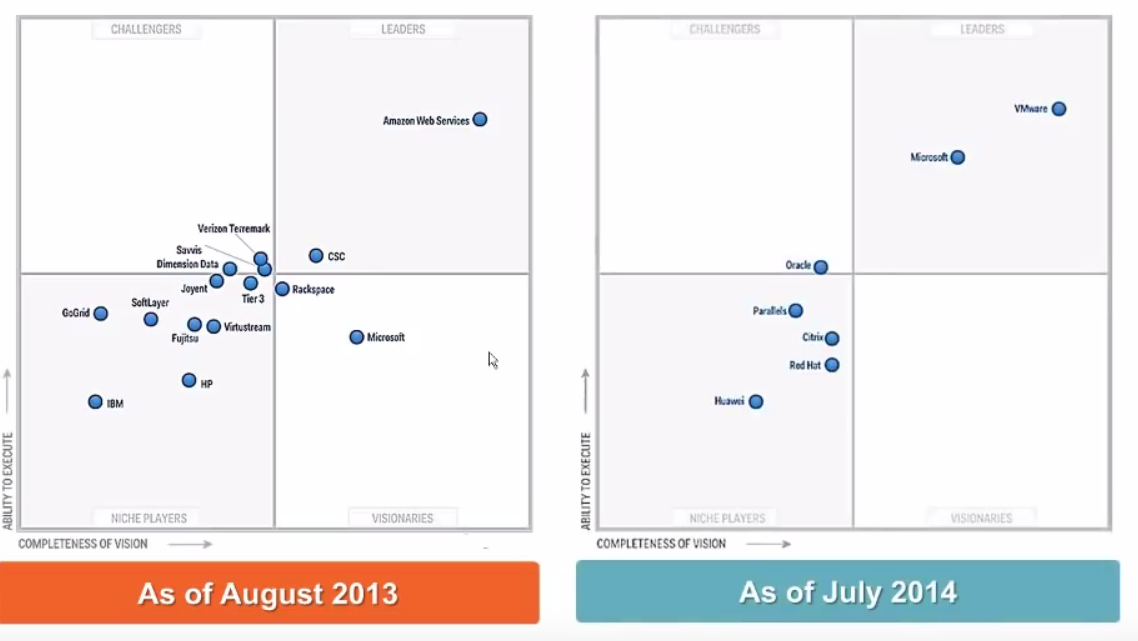In late august, Elias Khnaser (re) ran a webinar for Pluralsight about the differences between AWS and Microsoft Azure. How cloud providers are now ranked were among the various pieces of information he gave during an hour.
These 2 slides about the cloud landscape changed in less than 4 years.
Cloud Providers in 2010-2012
Cloud Providers in 2013-2014
Looking back at those years, we may recognize:
- the concentration pattern
- the niche pattern,
- and the “always wait for the 3rd iteration of a Microsoft product” pattern.
Other insights include:
- Amazon offers did not progress like other market participants
- Microsoft efforts to automate things were successful
Also note that Gartner’s list is cumbersome: OVH is no longer here and VMware wasn’t listed until now. One may also wonders why Huawei is listed since regional markets are not yet the same, as it is for OVH.
No doubt that next iteration in one year will change things again. However, this is a drawback when you are investing in cloud! Like may other software products, you expect your vendor to deliver a product which is reliable, durable and does not neglect the future directions the market takes.
Please also note that relying solely only on external consultancy, and in particular one source, is not future-wise. You may want to keep in mind that:
- Although the assessment method is described, implementation of products is often based on standard scenarios and edge cases are often not retained which may discredit niche products. But given your business area, this niche product may be better than anything else listed.
- Other consultancy firms may assess the technology in a total different way and give you new light on a particular matter.
Cloud definition
One final remark is that what cloud is comprised of changed during that period: from simple virtual machine operation on a remote location, we are going towards availability of full virtual datacenters, which changed the assessment landscape for all those firms. One thing didn’t changed however is that simple definition of what a cloud is: forget about cost reduction, customer oriented technical staff, pay-as-go and green IT stuff. Just remember that the 2cloud is somebody’s else computer”: this is is valid for access, security, performance and who really cares about your IT.

